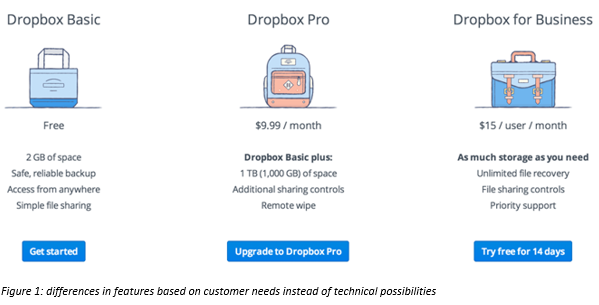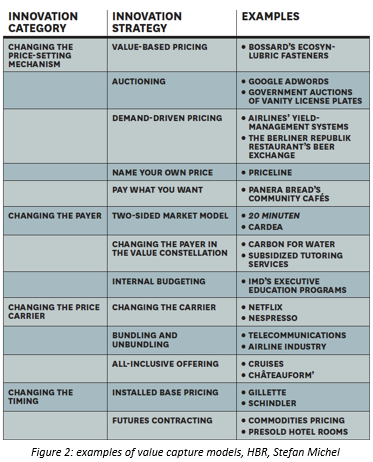
In this series, Andries discusses the different ways to determine price. The Value Based method is a way to fight the competition using your own strengths. Pricing based on the value and the client’s 'willingness to pay' provides a stable basis. After the introductory blog, value detection and value creation were discussed. Once you have detected value, or value elements, you can start creating products or services with added value. That leads us to value capture.
So far, so good. But now we’ve reached the trickiest aspect. How can you translate the added value your product represents to profit for your company? The willingness to pay I spoke about in previous blogs remains essential. We should question this willingness early on in the detection and creation process, to have a clear insight. These insights (who wants to pay how much for which feature) will guide us in the positioning of our product and possible derivations of it.
For value capture, it is of utmost importance to divide the features people are willing to pay (a lot) for in categories or segments (i.e. basic, professional, expert…). There should be enough value in the various categories to account for the price difference. This explicit value, which is translated in the willingness to pay, should be supplemented with less explicit value elements to reach a full offer.
Dropbox and Nespresso
If we look at the example of Dropbox below, we can see this segmentation. With Dropbox Basic, you receive a limited storage volume for free, but in combination with competing services. The other features are comparable with those of other cloud services.

The leap to the pro version, in terms of storage volume, is gigantic (x500!) and you get the possibility to delete your data when on location in case of emergency. The option ‘for business’ offers virtually unlimited storage, even more efficient sharing options and priority support.
You can clearly see the shift from storage to service as we are moving more to the right. For the pro version the ‘1TB storage’ will still be a decisive element. In the ‘for business’ option, the amount of storage isn’t even mentioned. They do mention ‘file recovery’ and ‘priority support’.
In terms of value capture, you can see something interesting happening here. With the first two models you sell storage space. With the third option, you sell service, better collaboration, and storage space is secondary. We see that the same company sells the same (technical) product as a different (packaged) product.
This is only one of the techniques used to innovate in value capture: changing the carrier. We slightly change the product that we sell, which changes the perceived value.
Nespresso is an excellent example of how companies deal with this. Because they changed the way people make coffee, they can ask €60 per kilogram of coffee. A kilo of quality coffee in an average supermarket is priced at €30.
To reach this price, Nespresso not only needed to change the way of coffee making. They also founded their own sales channel, with a premium service feeling, an online platform for ordering coffee, etcetera. Because of all these elements, the experience of drinking coffee at Nespresso is so different from their competition that the value perception and therefore the price is a lot higher.
Changing the carrier
These examples seem simple, but don’t be deceived, it’s the result of a long and structured design process to deliver the best product at the best possible price. That’s a lengthy process requiring more than one iteration. But once launched, these are the products that stay relevant and at the top of the class.
The process of value detection, value creation, and value capture is one that requires profound research, from which in-depth insights arise and which is the basis for well-founded strategic decisions concerning development and marketing. It’s a process that requires an investment, also in time, but the return can be invaluable in the long term! It’s a long and dirty road, but it’s worth it in the end!




